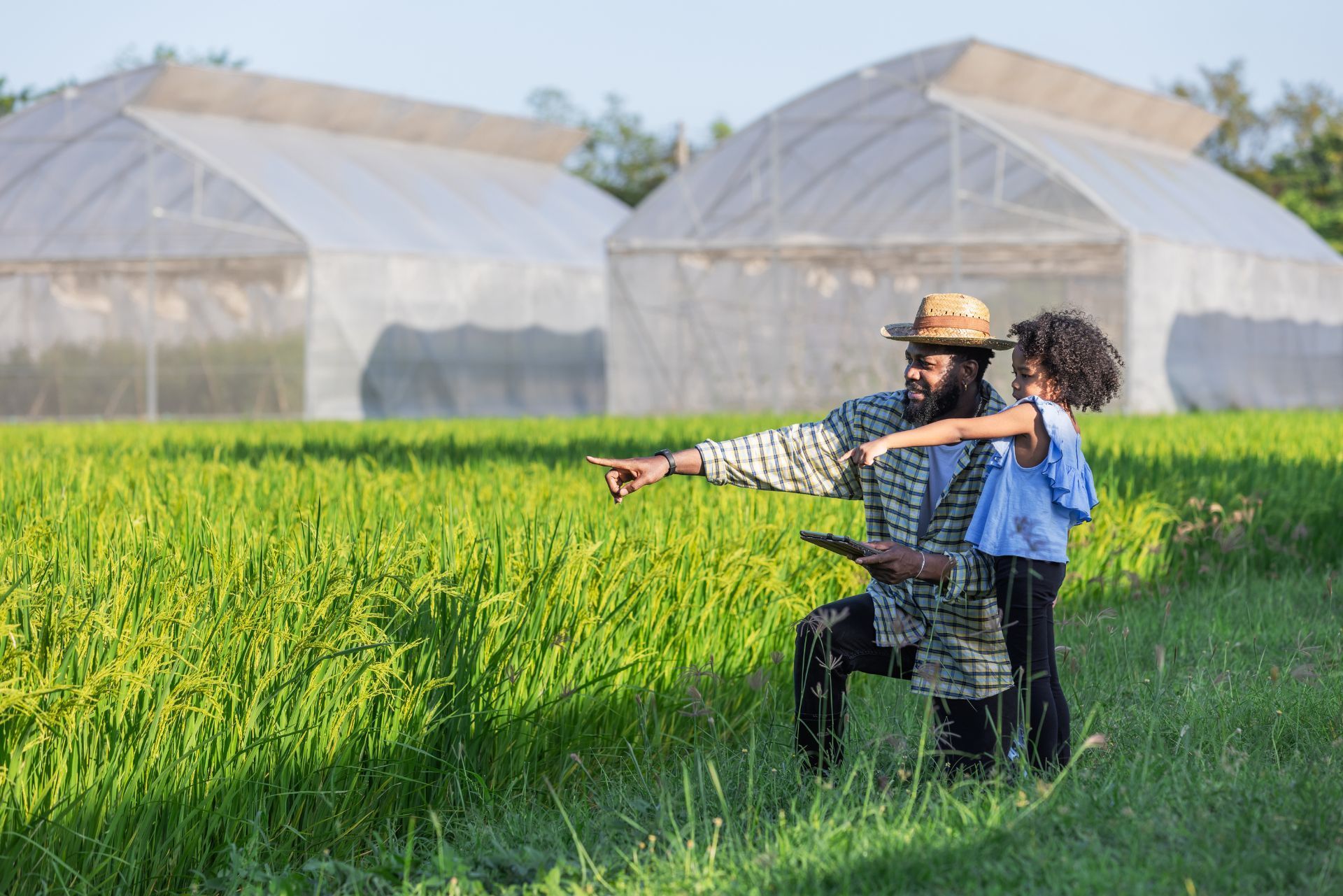
Top 3 Recommended Policies

Rice farming is a complex and demanding agricultural pursuit, requiring careful management of resources, weather risks, and market fluctuations. For rice mill operators and farmers alike, protecting their investments through comprehensive insurance is not just prudent—it’s essential. With evolving climate challenges and innovative insurance solutions, rice mill farm insurance has become more sophisticated, offering tailored coverage that addresses the unique risks faced by this sector.
In 2024, the USDA's Risk Management Agency expanded the Enhanced Coverage Option (ECO) to cover 46 crops across 2,856 counties, enhancing premium support to make policies more affordable for farmers. This expansion reflects a growing recognition of the need for accessible and effective insurance options in agriculture, including rice farming. For those interested in the latest developments, the USDA Risk Management Agency’s updates provide valuable insights into these advancements.
Understanding the Risks in Rice Mill Farming
Rice mill farms face a unique set of risks that can threaten both crop yields and processing operations. Weather volatility, pest infestations, and equipment damage are just a few of the challenges that can disrupt production. Additionally, climate change is intensifying these risks, making insurance coverage more critical than ever.
A 2025 study highlights that insurance claims for crops like corn are expected to rise significantly due to climate change, with claims potentially increasing by 22% by 2030 and nearly 29% by 2050. Although this study focuses on corn, the implications for rice farming are similar, as extreme weather events increasingly impact crop viability and insurance costs are projected to double by 2050. This trend underscores the importance of securing robust insurance coverage tailored to evolving environmental conditions.
Rice mill operators must also consider liability risks associated with their operations. The USDA’s 2024 report reveals that liability insured with area add-up insurance has more than tripled from $2 billion to $7 billion between 2018 and 2023, reflecting growing awareness of liability exposure in agriculture. This increase signals that insurance products are adapting to cover a broader spectrum of risks, including those specific to farm operations and processing facilities.
Moreover, the financial implications of these risks extend beyond immediate losses. For instance, fluctuating market prices for rice can leave farmers vulnerable, especially if they are unable to secure their crops against adverse weather conditions. The interconnectedness of global markets means that a poor harvest in one region can lead to price spikes elsewhere, further complicating the financial landscape for rice mill operators. As a result, understanding market trends and having contingency plans in place is essential for maintaining profitability.
In addition to these financial risks, the health and safety of workers on rice mill farms must also be prioritized. The physical demands of milling operations can lead to workplace injuries, which not only affect productivity but can also result in costly legal liabilities. Implementing safety training programs and ensuring compliance with occupational health regulations can mitigate these risks, fostering a safer working environment. As the industry evolves, a proactive approach to both environmental and human factors will be key to sustaining operations and ensuring the long-term viability of rice mill farming.
Innovations in Rice Mill Farm Insurance Coverage
Insurance providers are leveraging technology and data analytics to refine risk assessment and pricing models for agricultural insurance, including rice mill farms. According to industry experts, insurers were early adopters of artificial intelligence (AI), which is now extensively used in underwriting and pricing farm accounts. This integration of AI helps insurers better understand complex risk factors and offer more accurate, affordable coverage.
Moreover, insurers are employing a variety of sophisticated models to assess risks in this asset-heavy industry. By analyzing extensive data sets, including meteorological information, insurers can more precisely evaluate the likelihood of adverse events and adjust policies accordingly. A 2025 study found that incorporating weather data into volatility models significantly enhances risk-hedging strategies, making coverage more responsive to real-world conditions.
One notable innovation introduced by the USDA’s Risk Management Agency in 2025 is the Tropical Storm Option (TSO), added to the Hurricane Insurance Protection-Wind Index endorsement in 1,010 counties. This option has been elected by 60% of eligible policies, demonstrating strong demand for targeted coverage against tropical storm risks. For rice farmers in vulnerable regions, TSO represents a critical safeguard against increasingly frequent and severe weather events. More details on this development can be found on the USDA Risk Management Agency’s website.
In addition to these advancements, the use of satellite imagery and remote sensing technology has transformed how insurers assess crop health and yield potential. By utilizing high-resolution images from satellites, insurers can monitor rice fields in real-time, allowing for timely interventions and more accurate assessments of crop conditions. This technology not only aids in risk evaluation but also provides farmers with valuable insights into their farming practices, enabling them to optimize production and minimize losses.
Furthermore, the rise of blockchain technology in agricultural insurance is paving the way for more transparent and efficient claims processes. By creating immutable records of transactions and events, blockchain can streamline the verification of claims related to crop damage or loss. This innovation not only expedites the claims process but also builds trust between insurers and farmers, as both parties can access the same verified data. As these technologies continue to evolve, they promise to create a more resilient agricultural insurance landscape, particularly for those in the rice milling sector.

Enhanced Coverage Options for Rice Crops
The Enhanced Coverage Option (ECO) is a vital component of modern farm insurance, providing increased premium support and more affordable protection. In 2024, the USDA expanded ECO to include 46 crops, benefiting thousands of counties nationwide. This expansion is particularly beneficial for rice farmers, who face high production costs and weather-related risks.
ECO policies help bridge the gap between basic coverage and the full value of the crop, offering farmers greater financial security in the event of a loss. By reducing the cost barrier, ECO encourages more farmers to participate in crop insurance programs, thereby stabilizing incomes and supporting sustainable farming practices.
For rice mill operators, combining ECO with other insurance products can create a comprehensive risk management strategy. This might include crop insurance, liability coverage, and property insurance tailored to the specific needs of milling operations. The USDA’s ongoing enhancements to these programs reflect a commitment to supporting agricultural resilience in the face of climate and market uncertainties.
In addition to financial protection, the ECO program also emphasizes the importance of data-driven decision-making. Farmers can utilize advanced analytics and technology to assess their risk exposure and make informed choices about their coverage options. This proactive approach not only enhances the effectiveness of the insurance but also empowers farmers to adapt to changing environmental conditions, ensuring that they can maintain productivity even during challenging seasons. Furthermore, the integration of precision agriculture techniques allows rice farmers to optimize their yields while minimizing waste, further reinforcing the need for robust insurance solutions.
Moreover, the expansion of ECO has sparked conversations about the future of sustainable farming practices. As rice production is often linked to significant water usage and environmental impact, the availability of enhanced coverage options encourages farmers to adopt more sustainable practices. This includes implementing water-saving technologies and crop rotation strategies that can lead to healthier soil and ecosystems. By aligning economic incentives with environmental stewardship, the ECO program not only protects farmers but also promotes a more sustainable agricultural landscape for future generations.
Liability and Property Insurance Trends in Agriculture
Liability insurance is increasingly important for rice mill farms, which must manage risks related to equipment operation, employee safety, and environmental impact. The USDA’s 2024 report highlights a dramatic increase in insured liability for animals and animal products, rising 26-fold and now accounting for 11% of U.S. cash receipts in this sector. While this statistic focuses on animal agriculture, it signals a broader trend of growing liability awareness across all farming industries, including rice milling. The heightened focus on liability is also driven by the increasing complexity of regulatory requirements and the need for farms to demonstrate compliance with environmental standards, which can vary significantly from one region to another.
Property insurance also plays a critical role in protecting the physical assets of rice mill farms. Facilities, machinery, and storage infrastructure represent significant investments that require safeguarding against fire, theft, storms, and other hazards. Insurers are adapting policies to cover these assets more comprehensively, often bundling coverage with crop and liability insurance for streamlined protection. Additionally, as climate change continues to impact weather patterns, insurers are beginning to incorporate climate risk assessments into their underwriting processes, leading to more tailored coverage options that address specific vulnerabilities faced by rice mill operations in different geographic locations.
Farmers and mill operators should work closely with knowledgeable insurance agents to customize their coverage portfolios. Given the rapid evolution of insurance products and risk factors, staying informed about industry trends and new offerings is essential for maintaining adequate protection. Moreover, as technology advances, the integration of data analytics and risk management tools is becoming more prevalent in the agricultural insurance landscape. These tools can help farmers better understand their risk exposures and optimize their insurance strategies, ultimately leading to more resilient operations in an ever-changing agricultural environment.

Future Outlook: Preparing for Climate and Market Challenges
The future of rice mill farm insurance will be shaped by ongoing climate change, technological advancements, and shifting market dynamics. As weather patterns become more unpredictable, insurance claims are expected to rise, driving up costs and necessitating innovative solutions.
Insurers are likely to continue expanding the use of AI and data-driven models to refine risk assessments and develop new products that address emerging threats. The integration of meteorological data into pricing and underwriting will become increasingly standard, helping farmers hedge against volatility more effectively.
Rice mill operators should anticipate these changes by adopting proactive risk management strategies, including diversified insurance coverage and investments in resilient farming practices. Staying informed through trusted sources such as the Insurance Journal and USDA reports will help stakeholders navigate the evolving landscape with confidence.
Moreover, as global demand for rice continues to rise, driven by population growth and changing dietary preferences, rice mill operators must also be prepared to adapt to market fluctuations. This could involve exploring new markets or diversifying their product offerings to include value-added products such as rice flour or organic rice. By doing so, they can not only mitigate risks associated with price volatility but also tap into emerging consumer trends that favor sustainability and health-conscious choices.
Additionally, collaboration with agricultural technology firms may provide rice mill operators with the tools they need to enhance productivity and sustainability. Innovations such as precision agriculture, which utilizes satellite imagery and IoT devices, can optimize resource use and improve crop yields. By leveraging these technologies, farmers can not only increase their resilience to climate impacts but also position themselves competitively in an ever-evolving market landscape.
Conclusion
Rice mill farm insurance is evolving rapidly to meet the demands of a changing agricultural environment. With expanded coverage options like the Enhanced Coverage Option and the Tropical Storm Option, along with advanced risk assessment technologies, rice farmers and mill operators have more tools than ever to protect their livelihoods.
Understanding the specific risks faced by rice mill farms and leveraging the latest insurance innovations is key to building resilience. By staying informed and working with experienced insurance professionals, rice mill farms can secure comprehensive coverage that supports sustainable growth and long-term success.
Contact Us

